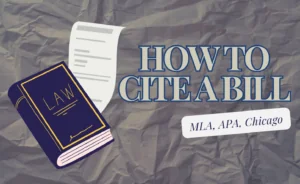Assume you’re building an array of thoughts, with each piece drawn from different sources. Citing these sources is not just a tribute to the original creators, but also a sign of academic honesty. Footnotes are unique among the many styles that embellish the academic environment. They’re more than just references. They’re gateways to greater comprehension, strengthening your story without overwhelming it.

✅ AI Essay Writer ✅ AI Detector ✅ Plagchecker ✅ Paraphraser
✅ Summarizer ✅ Citation Generator
What are Footnotes?
Footnotes are the passageways of academic texts, hidden in plain sight at the bottom of a page. They are the quiet heroes of clarity and depth in scholarly writing. Employed across various citation styles, with their stronghold in the Chicago Manual of Style, footnotes serve a multifunctional purpose.
Firstly, they act as the custodians of credit, attributing ideas, quotes, or data to their original sources. This fortifies the writer’s credibility and weaves a network of scholarly work, enabling readers to trace the genesis of ideas. Footnotes are the academic world’s nod to the integrity and interconnectedness of knowledge.
Beyond citation, footnotes are a canvas for elaboration. Where the main text marches forward with its argument, footnotes dance around it, offering additional explanations, clarifications, or counterpoints that enrich the reader’s understanding without overcrowding the narrative. This side stage is ideal for diving into related tangents or historical context that, while not central to the thesis, adds layers of understanding.
Footnotes also serve as a guide, pointing readers toward further reading or complementary studies. In this way, they expand the dialogue beyond the confines of the paper, inviting readers to explore the wider scholarly conversation.
In essence, footnotes are a testament to the writer’s diligence and respect for the subject and their audience. They enhance the readability of academic texts by segregating the supplementary information from the main discourse, thus ensuring the flow of argument remains uninterrupted. Through footnotes, writers can offer a richer, more nuanced exploration of their subject, promoting a deeper engagement with the reader.
How to Cite with Footnotes
Crafting footnotes requires attention to detail across various sources. Let’s break down the essentials:
Sources with One Author
For initial mentions, include the author’s name, title, location of publication, publisher, year of publication, and page number(s). For Henry James’ “The Ambassadors,” your footnote might read:
| Henry James, The Ambassadors (Rockville: Serenity, 2009), 34-40. |
Sources with Multiple Authors
When a source has two or three authors, list them all in your first citation. In subsequent references, you can simply use the last name of the first author followed by “et al.” For example:
| Alexander Aciman and Emmett Rensin, Twitterature: The World’s Greatest Books in Twenty Tweets or Less (New York: Penguin Books, 2009), 47-48. |
Citing Sources with No Author
Lack of an author? No problem. Use the title in place of the author’s name. If there’s no publication date, “n.d.” (no date) steps in:
| In The Shadows (New York: Scholastic, 2010), 65. |
Chapter in a Book
Cite the author of the chapter, the chapter title, the book’s editor(s), and the page range. Garrett P. Serviss’ chapter citation might look like:
| Garrett P. Serviss, ‘A Trip of Terror,’ in A Columbus of Space (New York: Appleton, 1911), 17-32. |
Article in a Periodical
Include the author, article title, periodical title, volume, issue number, date of publication, and page numbers. For example:
| William G. Jacoby, ‘Public Attitudes Toward Public Spending,’ American Journal of Political Science 38, no. 2 (May 1994): 336-61. |
Website
Web citations need the author (if available), title of the piece, website name, publication date, and URL.
| Twitter Privacy Policy,” Privacy Policy, Twitter, last modified January 1, 2020, https://twitter.com/en/privacy. |
E-book
Similar to print books but also include the format. For instance:
| Cynthia J. Cyrus, The Scribes for Women’s Convents in Late Medieval Germany (Toronto: University of Toronto Press, 2009), ProQuest Ebook Central. |
Footnotes or Endnotes: What’s The Difference?
Choosing between footnotes and endnotes in academic writing is like selecting the right tool for a delicate job. Both serve similar functions: citing sources, providing additional information, and enriching the text with detailed explanations. However, their placement within a document influences how readers interact with the material, affecting the flow and accessibility of information.
Footnotes appear at the bottom of the page where the reference is made, offering immediate access to the cited information without disrupting the reader’s engagement with the text. They are akin to having a knowledgeable guide whispering insights as you explore a museum, enhancing the experience without leading you away from the exhibit.
Endnotes, on the other hand, are listed at the end of a chapter or the document, creating a cleaner page layout but requiring readers to flip back and forth to access the information. This is similar to receiving a brochure at the end of your museum visit – it contains valuable information, but you must pause your current engagement to digest it.
Both methods have their merits and pitfalls, and the choice between them often boils down to the nature of the document, the writer’s preference, and the audience’s needs. To further elucidate the distinctions and similarities, here’s a comparative table:
| Feature | Footnotes | Endnotes |
|---|---|---|
| Location | Bottom of the page | End of the chapter or document |
| Accessibility | Immediate access for the reader | Requires navigating to the document’s end |
| Page Aesthetics | Can clutter the page | Keeps the page uncluttered |
| Reader Engagement | Maintains engagement with the text | Potentially disrupts engagement |
| Best Used For | Detailed explanations, immediate reference | Lengthy discussions, extensive lists of citations |
| Interruption | Minimal | Moderate to high |
| Ease of Compilation | Straightforward | Straightforward |
| Audience Preference | Readers who prefer in-depth understanding without leaving the page | Readers comfortable with referencing information at their own pace |
Ultimately, whether to use footnotes or endnotes in your academic work depends on your priorities for the document. Do you value immediacy and depth of engagement? Footnotes might be your best ally. Prefer a sleek layout and are tackling a subject that benefits from less immediate, more cumulative elaboration? Endnotes could be the way to go.
Conclusion
Like signposts in a scholarly journey, footnotes guide readers through your research. They offer a detailed yet unobtrusive way to credit sources, providing a foundation of trust and credibility in your work.
FAQ
Follow us on Reddit for more insights and updates.





Comments (0)
Welcome to A*Help comments!
We’re all about debate and discussion at A*Help.
We value the diverse opinions of users, so you may find points of view that you don’t agree with. And that’s cool. However, there are certain things we’re not OK with: attempts to manipulate our data in any way, for example, or the posting of discriminative, offensive, hateful, or disparaging material.